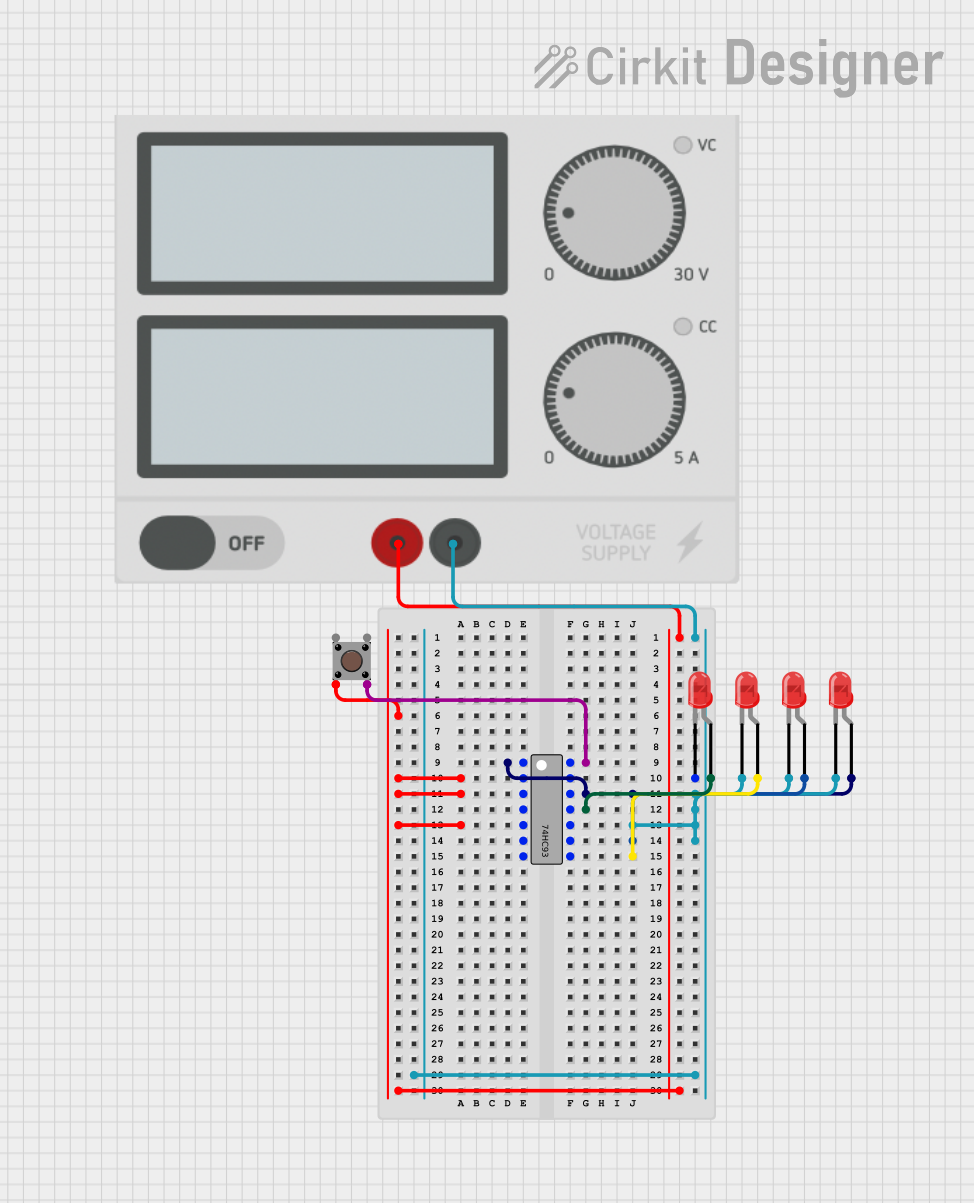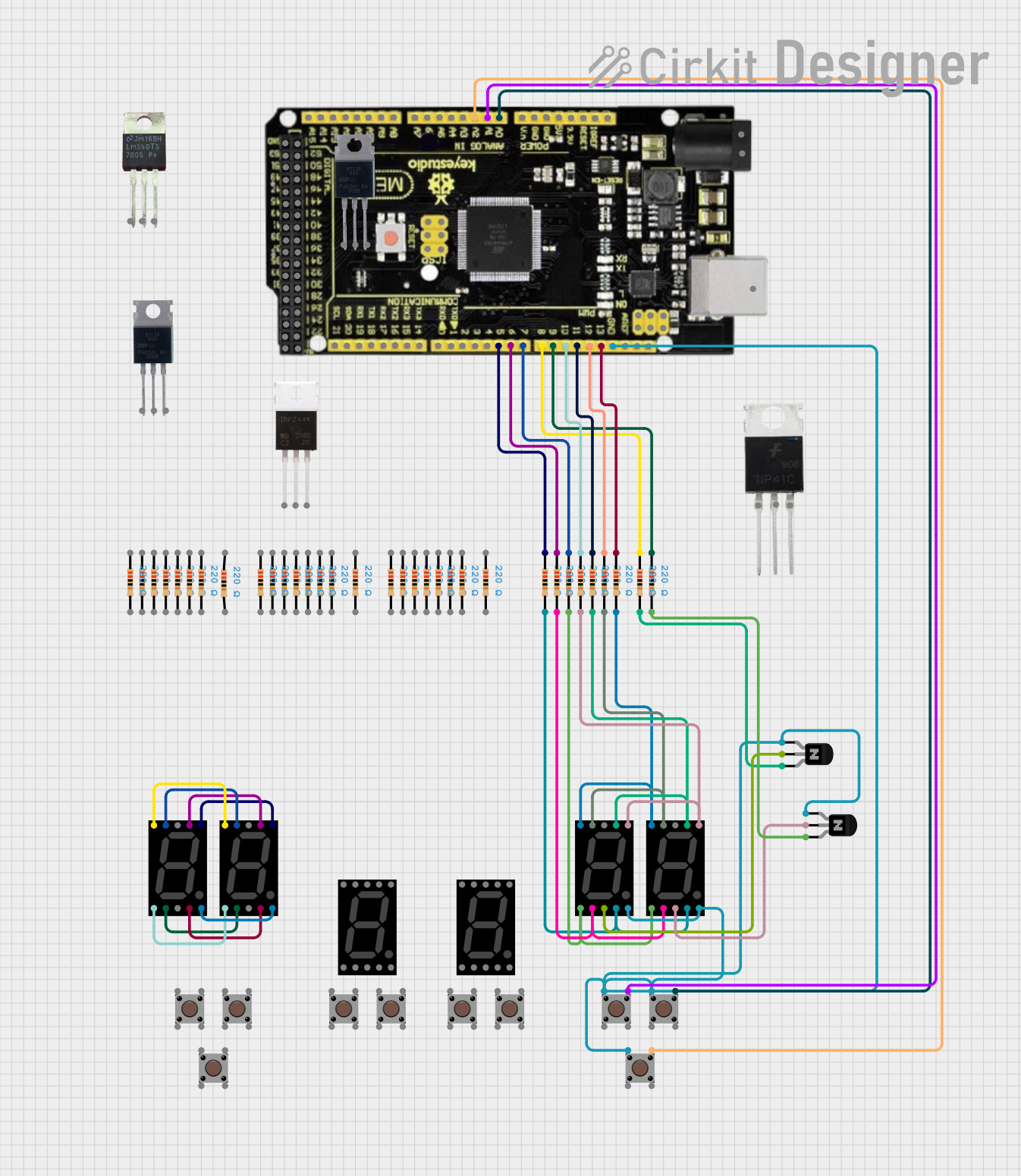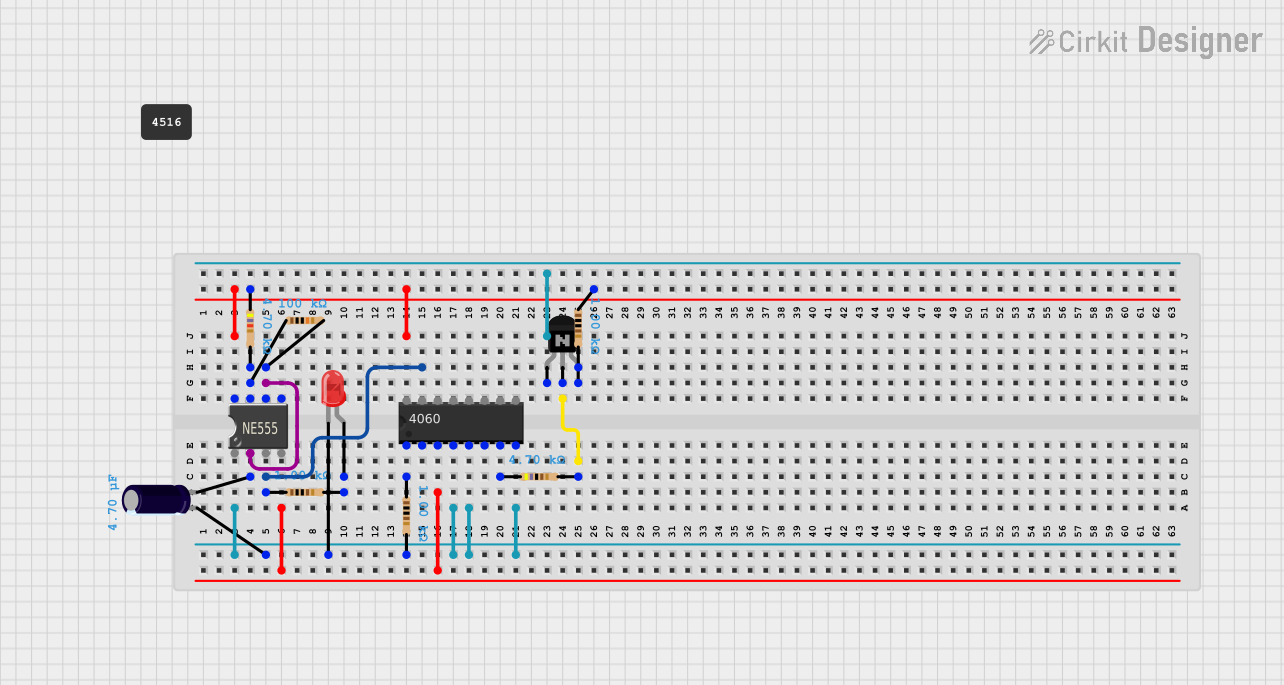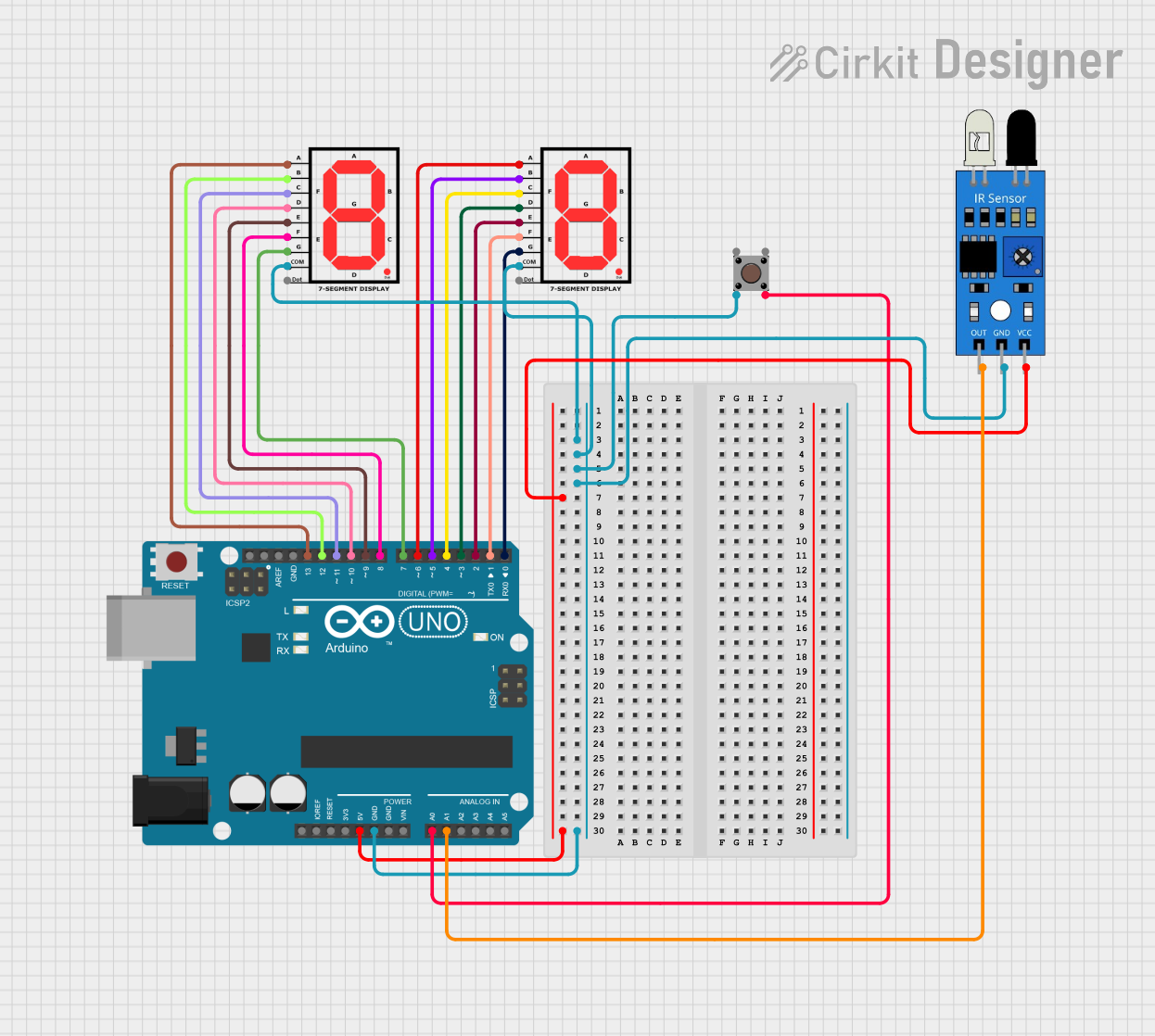
How to Use 8-bit Programmable Counter: Examples, Pinouts, and Specs

 Design with 8-bit Programmable Counter in Cirkit Designer
Design with 8-bit Programmable Counter in Cirkit DesignerIntroduction
The MC14569B is an 8-bit programmable counter designed and manufactured by Motorola. It is a digital circuit component capable of counting in binary from 0 to 255. One of the key features of this counter is the ability to set the starting count value using programming signals, making it highly versatile for a range of applications. Common use cases include digital clocks, frequency dividers, timers, and event counters in embedded systems.
Explore Projects Built with 8-bit Programmable Counter

 Open Project in Cirkit Designer
Open Project in Cirkit Designer
 Open Project in Cirkit Designer
Open Project in Cirkit Designer
 Open Project in Cirkit Designer
Open Project in Cirkit Designer
 Open Project in Cirkit Designer
Open Project in Cirkit DesignerExplore Projects Built with 8-bit Programmable Counter

 Open Project in Cirkit Designer
Open Project in Cirkit Designer
 Open Project in Cirkit Designer
Open Project in Cirkit Designer
 Open Project in Cirkit Designer
Open Project in Cirkit Designer
 Open Project in Cirkit Designer
Open Project in Cirkit DesignerTechnical Specifications
Key Technical Details
- Supply Voltage (Vcc): 3V to 18V
- Input Voltage (Vin): -1.5V to Vcc + 1.5V
- Output Voltage (Vout): -0.5V to Vcc + 0.5V
- Operating Temperature: -55°C to +125°C
- Count Range: 0 to 255 (8-bit binary)
- Package: 16-pin DIP (Dual In-line Package)
Pin Configuration and Descriptions
| Pin Number | Name | Description |
|---|---|---|
| 1 | Vss | Ground reference for the circuit. |
| 2 | Q0 | Least significant bit (LSB) of the counter output. |
| 3 | Q1 | Second least significant bit of the counter output. |
| 4 | Q2 | Third bit of the counter output. |
| 5 | Q3 | Fourth bit of the counter output. |
| 6 | Q4 | Fifth bit of the counter output. |
| 7 | Q5 | Sixth bit of the counter output. |
| 8 | Q6 | Seventh bit of the counter output. |
| 9 | Q7 | Most significant bit (MSB) of the counter output. |
| 10 | PE | Programming enable input. Active low. |
| 11 | DATA | Programming data input. |
| 12 | CLK | Clock input. Counter advances on the rising edge. |
| 13 | RESET | Resets the counter to the programmed value when low. |
| 14 | Vcc | Positive supply voltage input. |
Usage Instructions
How to Use the MC14569B in a Circuit
- Power Supply: Connect Vcc to a positive supply voltage within the specified range and Vss to the ground.
- Programming the Counter:
- To program the counter, pull the PE pin low.
- Apply the desired starting binary value to the Q0-Q7 pins, with Q0 being the LSB and Q7 the MSB.
- Once the desired value is set, release the PE pin to high to enable counting.
- Counting:
- Apply a low-to-high transition pulse to the CLK pin to increment the counter.
- The current count can be read from the Q0-Q7 output pins at any time.
- Resetting the Counter:
- To reset the counter to the programmed value, apply a low pulse to the RESET pin.
Important Considerations and Best Practices
- Ensure that the power supply does not exceed the maximum voltage rating to prevent damage to the component.
- Use a pull-up resistor on the PE pin to ensure it remains high during normal operation.
- Debounce the CLK input if mechanical switches are used to avoid erroneous counts.
- Utilize a proper decoupling capacitor close to the Vcc pin to minimize power supply noise.
Troubleshooting and FAQs
Common Issues
- Counter Not Incrementing: Verify that the CLK input is receiving clean transition pulses and that the PE pin is not held low.
- Incorrect Starting Value: Ensure that the programming sequence is correctly followed and that the DATA input is stable when the PE pin is released.
- No Output on Pins Q0-Q7: Check if the RESET pin is not held low and that the supply voltage is within the specified range.
Solutions and Tips for Troubleshooting
- If the counter is not responding as expected, double-check the connections and ensure that all inputs are within their specified voltage ranges.
- For erratic counting, consider adding a debounce circuit to the CLK input.
- Verify that the power supply is stable and that there is no excessive noise that could be affecting the counter's operation.
FAQs
Q: Can the MC14569B be used with an Arduino UNO? A: Yes, the MC14569B can be interfaced with an Arduino UNO for various projects requiring counting capabilities.
Q: What is the maximum frequency the MC14569B can count? A: The maximum frequency depends on the supply voltage. Refer to the manufacturer's datasheet for detailed timing specifications.
Q: How can I reset the counter to zero? A: The MC14569B does not reset to zero but to the programmed starting value. To reset to zero, program the counter with all outputs (Q0-Q7) set to low.
Example Arduino UNO Code
// Define the pins connected to the counter
const int clockPin = 2; // CLK pin connected to digital pin 2
const int resetPin = 3; // RESET pin connected to digital pin 3
void setup() {
pinMode(clockPin, OUTPUT);
pinMode(resetPin, OUTPUT);
// Reset the counter at the start
digitalWrite(resetPin, LOW);
delay(10); // Wait for 10 milliseconds
digitalWrite(resetPin, HIGH);
}
void loop() {
// Increment the counter
digitalWrite(clockPin, HIGH);
delay(10); // Wait for 10 milliseconds
digitalWrite(clockPin, LOW);
delay(1000); // Wait for 1 second between counts
}
Note: This code assumes that the MC14569B has been programmed with a starting value prior to being used with the Arduino. The code provided simply increments the counter every second and resets the counter at the beginning of the program.